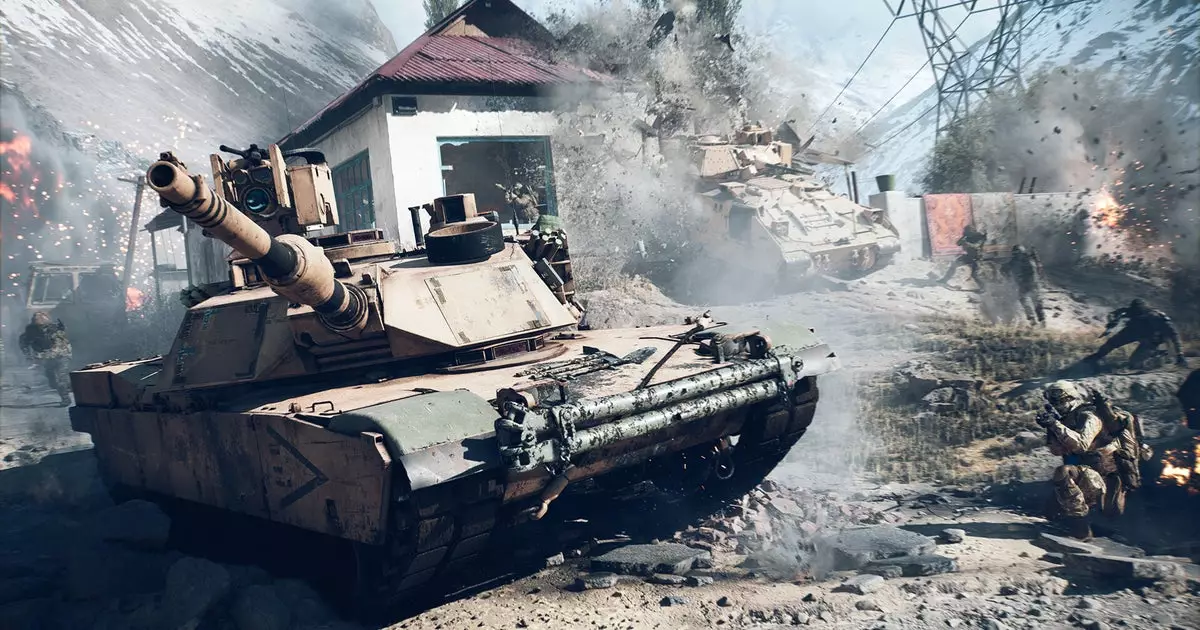In the expansive universe of Battlefield gaming, the experience of controlling vehicles reveals a fascinating dichotomy. On one hand, we witness players commanding tanks that seem almost superhuman—unmoving, yet agile and precise, akin to well-rehearsed ballet dancers. These are the tanks operated by seasoned opponents who manipulate these grounded behemoths with an almost artistic mastery. Conversely, when stepping into the driver’s seat myself, I often feel like I’m steering a fragile, wispy candy floss, with handling so sluggish and unpredictable that it renders me helpless against enemy fire. This stark contrast not only highlights a disparity in skill, but more critically, underscores the underlying balancing issues baked into the game’s design.
The wonder—and often frustration—lies in understanding whether these differences are rooted in player skill, or if they are symptomatic of deeper systemic problems within the game’s architecture. While a casual observer might simply chalk up my own struggles to lack of ability, it’s more accurate to recognize that these issues reveal the ongoing struggle developers face: creating vehicles that feel equitable, engaging, and fun across a broad spectrum of skill levels. When designing for fairness, it seems the developers have taken a cautious approach, perhaps starting with intentionally underpowered vehicles to avoid the all-too-common pitfall of overpowering gameplay.
Developer Commentary: Balance as a Moving Target
Recent insights from Battlefield 6’s lead producer, David Sirland, cast light on the delicate art of balancing vehicular combat. During the beta testing phase, players quickly discovered that tanks, helicopters, and jets operated with a surprising fragility when juxtaposed with infantry and engineer units armed with anti-tank mines or rockets. This imbalance is neither accidental nor purely a skill gap but appears to be a strategic decision by the developers—an initial “lowballing” of vehicle durability intended to foster a more dynamic, player-centric battlefield.
Sirland candidly admits that this is a fundamental, systemic issue—not just a result of individual encounters. His perspective, however, offers intriguing insight: they prefer to start with vehicles that are perceived as too weak rather than too powerful, understanding that as players become more adept, the units can be adjusted accordingly. This approach implies an understanding that balancing is less about a fixed standard and more about an evolving ecosystem, with ongoing tweaks responding to emergent gameplay patterns.
Yet, this strategy invites a gamble. By launching a game with vehicles that are inherently fragile, developers risk alienating players seeking the visceral thrill of dominating enemy armor, potentially dampening early engagement. Conversely, it’s an acknowledgment that the game’s true challenge lies in refining gameplay over time, rather than shipping a perfectly balanced product out of the gate. The hope appears to be that community feedback and data analysis will steer the game towards a more equitable state in future updates.
The Intricacies and Risks of Balancing in Multiplayer Warfare
Game balancing isn’t merely a numbers game; it’s a complex, fluid process that involves predicting how millions of players will interact with the game’s mechanics over months or even years. In the context of Battlefield 6, the ongoing tension revolves around the perceived necessity to limit vehicle power at launch while allowing that power to grow as players derive better tactics and develop expertise.
This raises an essential question: Are developers intentionally deploying an unbalanced product to anticipate future gameplay evolution? The answer seems to be complex. On one hand, initial imbalance might encourage players to experiment with unconventional tactics, such as engineer units wielding anti-tank weapons, creating a lively and unpredictable battlefield. On the other, it risks frustrating those who expect a sense of mastery and control when piloting high-tech vehicles.
Moreover, the beta’s Vehicle “sponginess” – the degree to which tanks and aircraft absorb damage without losing their effectiveness – hints at deeper issues. These aren’t solely technical glitches but reflect a conscious design philosophy: to craft a combat environment where skillful weapon deployment and strategic positioning matter more than brute force. This philosophy, however, must be managed cautiously; too much fragility discourages vehicle use and skews the game toward infantry dominance, while excessive durability can lead to monotonous stalemates.
As future updates and playtest maps introduce heavier vehicle content, players will undoubtedly gain more clarity on whether this balancing act fosters a competitive, fun environment or simply perpetuates frustration. If the game succeeds, it will be precisely because developers master this delicate dance—knowing when to nerf, when to buff, and when to let emergent gameplay take its natural course. But for now, it remains an ongoing challenge—almost an art form—to design a battlefield where all vehicles serve their purpose without overpowering or undercutting the core combat experience.
Behind the scenes, the real verdict on Battlefield 6’s balance will emerge over time, shaped by community feedback, competitive play, and the developers’ ability to evolve. The game’s initial fragility of vehicles speaks not just to technical considerations, but to a more ambitious goal: crafting a living, breathing battlefield that adapts and responds to its players. Whether this approach ultimately delivers a fair and thrilling experience remains to be seen, but what is clear is that balancing success in multiplayer gaming is less about achieving perfection and more about embracing perpetual discovery and refinement.

